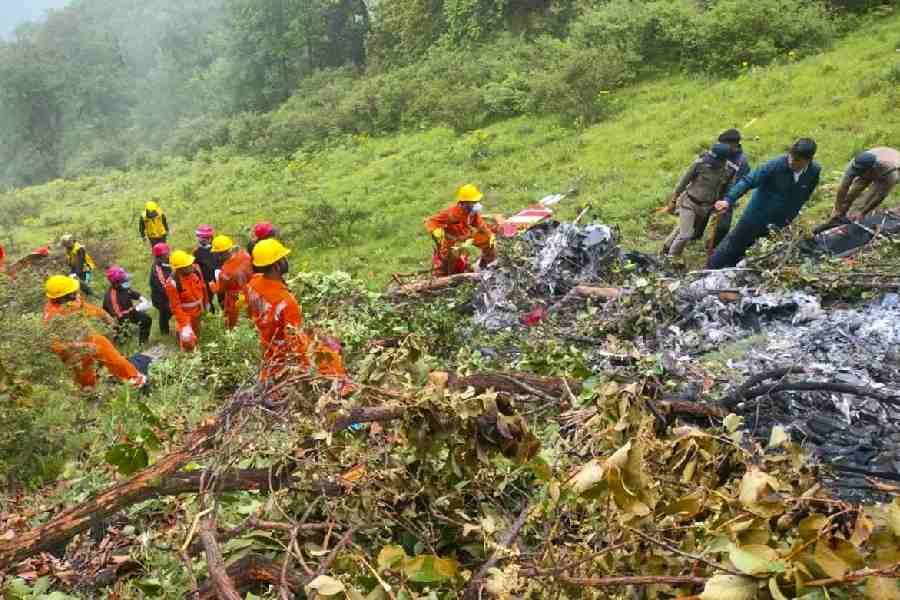
north Lakhimpur. Picture by Sarat Sarma
Nagaon, July 31: The towering sia nahor trees, home to the precious hornbill bird, will soon be seen reaching into the skies in other parts of Assam.
The state government plans to plant at least 50,000 saplings in the forest areas of Lakhimpur and Sonitpur districts in a bid to increase the population of the bird and conserve the tree, which has a host of uses.
Sia nahor is now found only in Kakoi and Delung reserve forests of Lakhimpur and Myanmar. The reserve forests are located along the bank of the Subansiri river in Assam's Lakhimpur district.
Sia nahor (Kayea assarnica), is an evergreen tree that can grow up to 25 metres tall. Its wood is more elastic, harder and stronger than teak and durable and is used for construction.
Long ago, fishermen living along the Subansiri used the fruits of this tree to poison the fish.
According to an initiative of the forest department, almost 50,000 sia nahor saplings have been brought from nurseries this month. These would be planted in forest areas under Lakhimpur and Sonitpur districts.
"All the three varieties of hornbill are found in Kakoi and Dulung reserve forests and that is because of the presence of this tree, which appears to be the best shelter for the bird," said a forest department official.
Lakhimpur has five reserve forests. With an almost 9,000 square km area, Dulung is the largest reserve forest in Lakhimpur. Kakoi is smaller, with 4,414 square km forest cover.
Conservator of forests (northern Assam circle) P. Siva Kumar said the forest department aimed to cultivate sia nahor in almost all the areas of eastern and central Assam and that would be done only in a phased manner.
"Unlike other species, sia nahor has some peculiar features. Till now, we could see the tree mostly along the Subansiri banks and some bank-line areas of the Boginodi and Ranganodi rivers. Any climatic or topographical behaviour might have caused the peculiar features. Our experiments might bring to light all the facts," Siva Kumar said.
In eastern Assam, people believe that sia nahor can cure cancer.
"Research is under way and many groups come from different parts of India to observe the medicinal value of the tree. We hope sia nahor could provide a cure for the disease one day," said Lakhimpur divisional forest officer Vasanthan B.
"You could see thousands of hornbills nestling on sia nahors. Two big storms between 2001 and 2009 damaged most of the trees along the Subansiri riverbank and that ultimately affected the hornbill population. If sia nahors are planted all through, it could help to increase the hornbill population," said Rupam Das, a Basagaon villager.











